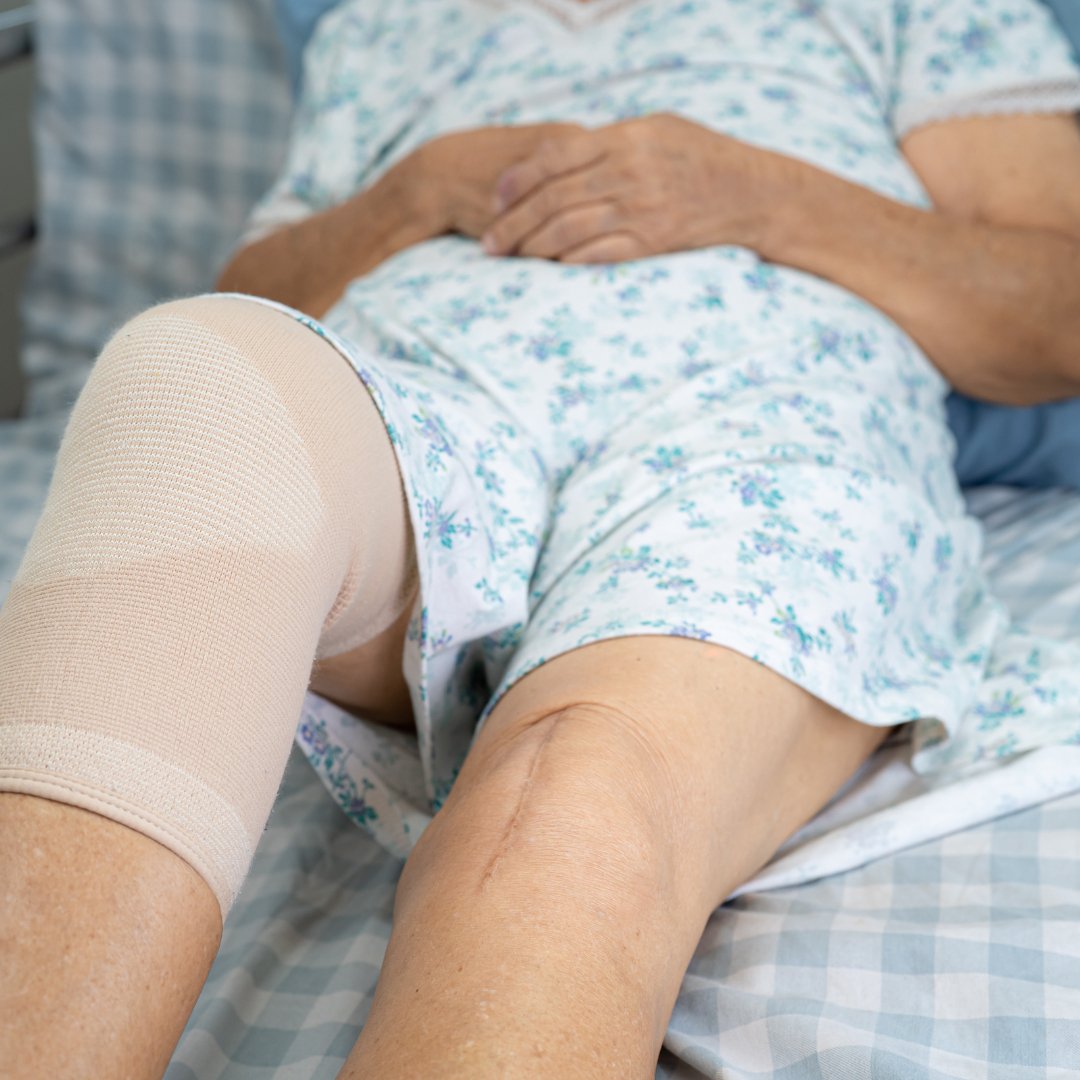
Neuromuscular Training for Knee Stability: What It Is and Why It Works
Learn how neuromuscular training improves knee stability, balance, and proprioception to support joint health and prevent injuries.
If you’ve ever had knee pain that lingers longer than a few months, you know how much it can disrupt your life. Walking, climbing stairs, or even standing at the kitchen counter chopping vegetables can feel like an Olympic event. As a physical therapist, I’ve seen how injuries and chronic knee conditions can progress over time, sometimes leading to the need for knee replacement surgery.
But before you picture yourself with a brand-new bionic knee, let’s talk about which types of injuries or diseases actually lead to this procedure, and what you can do along the way to keep your knees as healthy as possible.
Your knees carry the weight of your daily activities, and they don’t forget the wear and tear you put them through. Minor injuries often heal, but repeated trauma or untreated issues can create a domino effect. Over time, you may find your knee pain going from “annoying” to “life-changing.”
Ligaments are the sturdy bands that keep your knee stable. When you tear one, especially the anterior cruciate ligament (ACL), your knee may never feel the same again. Consider a high school soccer player who suffers an ACL injury, undergoes extensive physical therapy, and then returns to the sport, only to reinjure the knee and require surgery. This can set the stage for early-onset arthritis, which decades later may lead to knee replacement surgery as a solution for long-term pain relief.
Think of your meniscus as your knee’s shock absorber. A torn meniscus can happen suddenly with a twist or bend, or gradually with age. While some tears can be managed with physical therapy and strengthening, others contribute to progressive joint damage. If arthritis sets in after years of wear, knee replacement surgery may be in your future.
A fracture near your knee joint isn’t just painful. It can also change the way your joint fits together. My father was struck by a car while crossing the street in his early twenties and sustained a tibial plateau fracture. Although the bone eventually healed, the damaged cartilage and altered joint mechanics led to arthritis, stiffness, and chronic pain decades later. These long-term complications ultimately made knee replacement surgery necessary in his early seventies.

Injuries aren’t the only culprit. Some chronic conditions slowly chip away at your knee health until replacing the joint becomes the best way forward.
Osteoarthritis is the most common reason people eventually need total knee replacement surgery. It’s often described as “wear and tear” arthritis, where cartilage breaks down and bones start rubbing against each other. Stiffness, swelling, and pain become everyday companions, and over time the damage can’t be managed with simple exercises or medications.
According to the Centers for Disease Control and Prevention (CDC), nearly 32.5 million U.S. adults are affected by osteoarthritis. When arthritis settles into your knee joint and limits your ability to walk or perform daily activities, knee replacement surgery is often considered.
Unlike osteoarthritis, rheumatoid arthritis is an autoimmune disease. Your body’s immune system mistakenly attacks the lining of your joints, causing inflammation and pain. The constant inflammation can damage cartilage and bone, making total knee replacement surgery an option when medication and therapy can no longer control symptoms.
After a major knee injury, arthritis sometimes develops years later. This is called post-traumatic arthritis, and it can be just as painful as other types of arthritis. Stiffness, swelling, and joint damage that don’t respond to therapy or medication may eventually lead to knee replacement surgery.
The decision isn’t based on a single bad day or even one bad month. Instead, it’s about how your knee pain impacts your everyday life. If walking, sleeping, or even sitting comfortably becomes a struggle, and conservative treatments aren’t enough, your doctor may recommend knee replacement surgery.
Here are some signs it might be time:
As a therapist, I always encourage people to exhaust all non-surgical options first. But when those stop working, knee replacement surgery can restore not only your knee but also your quality of life.
I’ve guided many people through total knee replacement surgery recovery, and here’s the truth: it’s not easy, but it’s absolutely worth it. Imagine trading constant pain for a chance to move freely again. That’s what knee replacement offers.
Rehab and exercise are key. Strengthening your muscles, improving flexibility, and building endurance all help your new joint function better. Staying committed to your rehab routine makes all the difference in how strong and mobile your new knee will feel.

Even if you’re not facing surgery yet, there are practical steps you can start today:
Protecting your knees now can delay or even prevent the need for knee replacement surgery in the future.
Knee pain doesn’t have to define your life. Whether you’re dealing with an injury, arthritis, or the aftermath of years of wear and tear, there are always steps you can take to improve your mobility and reduce pain. Sometimes that means strengthening and stretching. In other cases, it may involve activity modifications, using supportive braces or sleeves, pursuing physical therapy, or ultimately considering total knee replacement surgery as the best path forward. Either way, your journey doesn’t end with pain. It continues with progress.
Good knees start with the right tools and knowledge. For guidance that helps you prepare for surgery, stay on track during knee replacement recovery, and maintain your progress long-term, check out GoKnee. Good luck on your knee journey!
Good knees start here. Don’t miss a step, subscribe to KneeMail for free tips from knee expert Shehla Rooney, PT!

Learn how neuromuscular training improves knee stability, balance, and proprioception to support joint health and prevent injuries.

Learn why knee stiffness isn’t only caused by aging and discover strategies to ease pain, improve mobility, and support long-term knee health.

Learn the difference between PTs and PTAs in knee physical therapy, their roles, and how it impacts your care and co-pay.

Discover the real cost of knee replacement surgery, from hospital bills to PT co-pays, insurance coverage, and hidden expenses.

Learn how H-Wave therapy eases knee pain, improves circulation, and supports knee replacement recovery as part of your rehab journey.